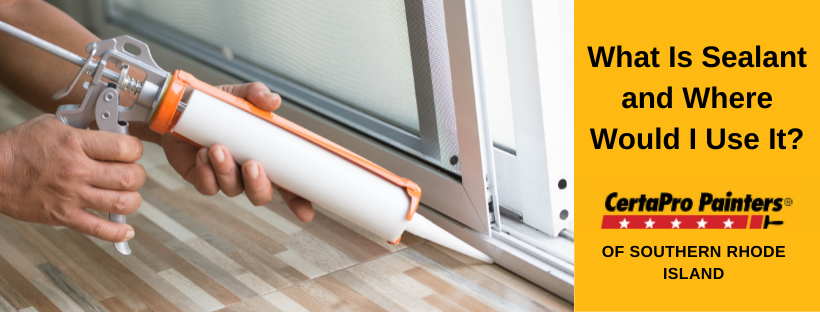
What Is Sealant and Where Would I Use It?
Posted on December 24, 2021
If you are a do-it-yourselfer who has done some painting around the house, you may have discovered how difficult painting some surfaces can be. Some surfaces seem to soak up paint, while others resist it. Sealant, also known as a sealer, can help prevent and correct painting problems before they start by preparing the surface to accept paint. Today, we will answer a few common questions homeowners tend to ask about sealant and how it is used.
What Is Sealant?
Sealant essentially encapsulates the surface to be painted, creating a barrier between the surface and new paint. Sealant is typically applied to porous materials, such as wood and concrete to prevent a new finish, such as paint, from being absorbed. Applying sealer also establishes a surface very accepting of new paint, making its adhesion stronger. This has economic benefits as well because paint is typically more expensive than either sealant or primer, so the pros will often apply as many coats of sealant as necessary to avoid applying additional coats of paint.
Sealant is available in both enamel and latex versions. Enamel paint is not water-soluble, so clean-up requires mineral spirits or other solvents. Enamels are generally flammable and expel strong fumes, so enamel sealants should only be used when air ventilation is plentiful. Enamel sealant dries extremely hard and is an excellent choice for outdoor projects, but can take several days to completely dry. After it does, however, the surface becomes very resistant to both impact and water damage.
Latex sealant is water-soluble, so it is the preferred solution in many projects. Latex sealant tends to dry quickly and forms a surface that should readily accept paint. Both interior and exterior versions of sealant are available, but care should be taken to closely follow the manufacturer’s directions.
Where Would I Use Sealant?
Sealant can be used on most surfaces that can be painted. Sealants are especially useful when applied to surfaces that would otherwise soak up paint, such as fences, sidewalks, patios, driveways, and walkways. If paint is applied to these materials without the benefit of sealant or primer, the natural color of these materials may bleed through the new paint and result in repainting. Since the primary function of sealant is to seal the pores of the material and establish a chemical bond with the new paint, it is one of the most effective painting products for the money.





